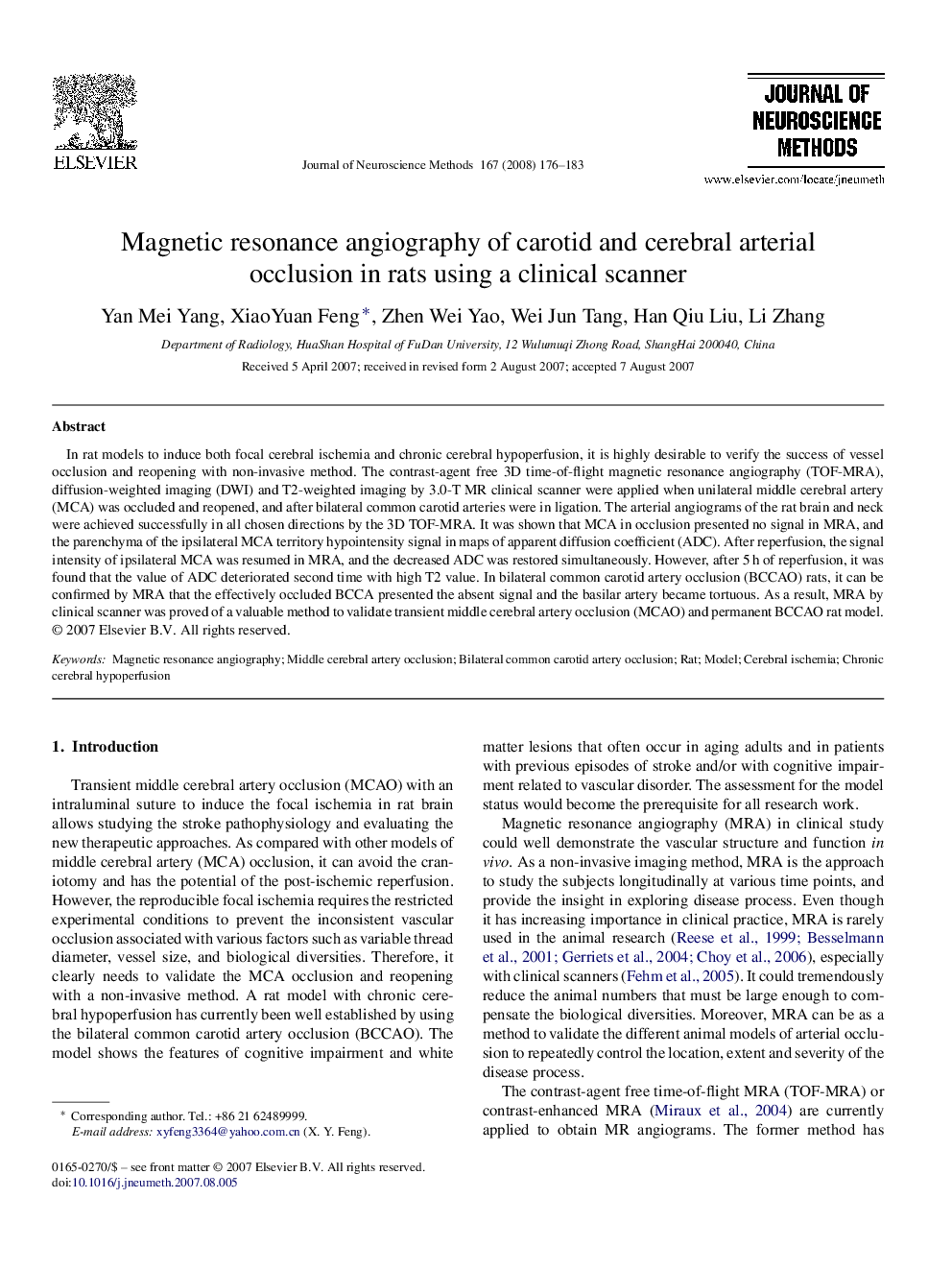| Article ID | Journal | Published Year | Pages | File Type |
|---|---|---|---|---|
| 4336680 | Journal of Neuroscience Methods | 2008 | 8 Pages |
Abstract
In rat models to induce both focal cerebral ischemia and chronic cerebral hypoperfusion, it is highly desirable to verify the success of vessel occlusion and reopening with non-invasive method. The contrast-agent free 3D time-of-flight magnetic resonance angiography (TOF-MRA), diffusion-weighted imaging (DWI) and T2-weighted imaging by 3.0-T MR clinical scanner were applied when unilateral middle cerebral artery (MCA) was occluded and reopened, and after bilateral common carotid arteries were in ligation. The arterial angiograms of the rat brain and neck were achieved successfully in all chosen directions by the 3D TOF-MRA. It was shown that MCA in occlusion presented no signal in MRA, and the parenchyma of the ipsilateral MCA territory hypointensity signal in maps of apparent diffusion coefficient (ADC). After reperfusion, the signal intensity of ipsilateral MCA was resumed in MRA, and the decreased ADC was restored simultaneously. However, after 5Â h of reperfusion, it was found that the value of ADC deteriorated second time with high T2 value. In bilateral common carotid artery occlusion (BCCAO) rats, it can be confirmed by MRA that the effectively occluded BCCA presented the absent signal and the basilar artery became tortuous. As a result, MRA by clinical scanner was proved of a valuable method to validate transient middle cerebral artery occlusion (MCAO) and permanent BCCAO rat model.
Keywords
Related Topics
Life Sciences
Neuroscience
Neuroscience (General)
Authors
Yan Mei Yang, XiaoYuan Feng, Zhen Wei Yao, Wei Jun Tang, Han Qiu Liu, Li Zhang,
